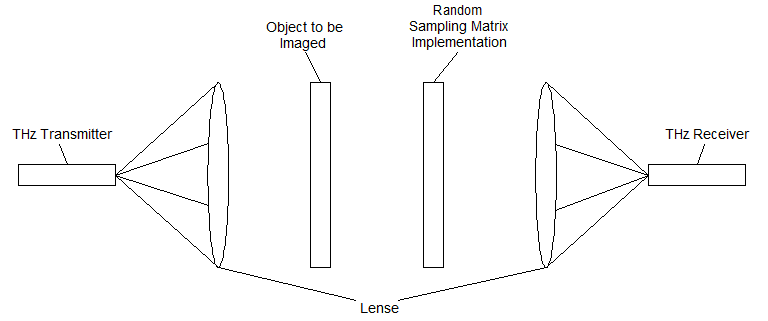Compressed sensing (CS) offers a partial solution to the significant problems of Terahertz (THz) imaging systems used for security including the image acquisition time, the resolution and the cost of the hardware.
Terahertz imaging systems have many potential applications including homeland security and medicine. These systems have some of the advantages of X-ray in that they pass through material such as clothing but not others such as a metal (or non-metal) weapons. Since THz radiation is not as energetic as x-ray radiation (i.e. it is non-ionizing), it also has the advantage of not being harmful to humans, so it could be used in places such as airport security where x-ray would be obviously unsafe.
As proposed by Chan et. al., a simple system, shown in Figure 1, could potentially be used to scan through an object. After the THz wave passes through the object to be imaged, it passes through a screen. This screen consists of a number of “pixels” which are either on (clear) or off (blocked) and physically represent a set of zeros and ones in the Φ matrix of a compressed sensing system. After passing through this optical filter, the beam is focused to a single point and read as one sample. This optical filter is then changed and the process repeated once for each sample generated.
